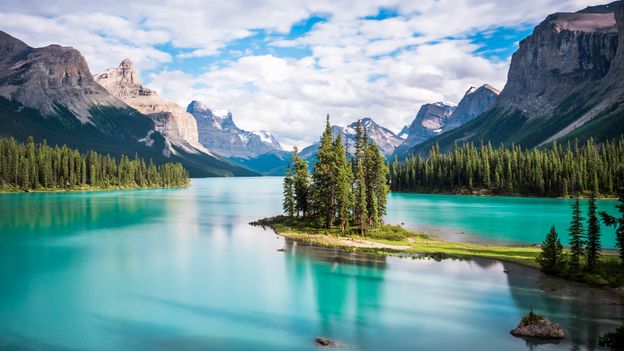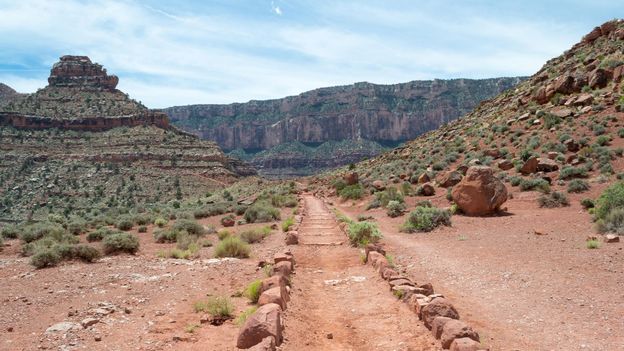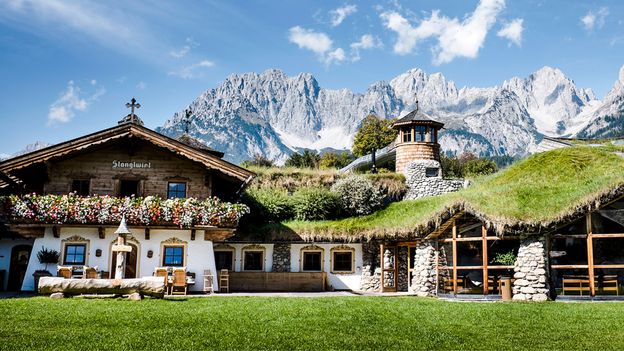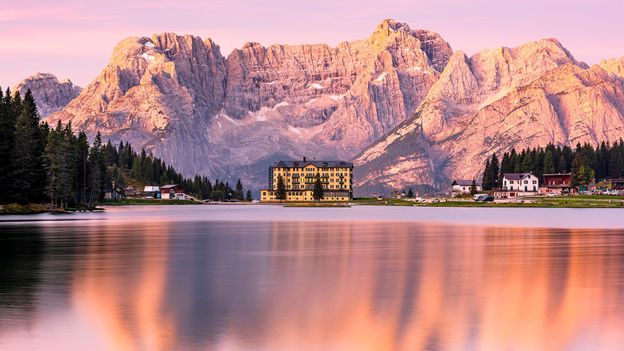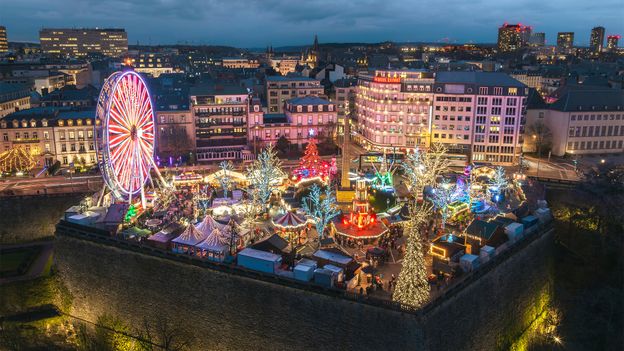Still, I knew that if I kept paddling and peering through the mist, I’d eventually see it: Spirit Island, the world’s most famous isle you can’t visit.
Often called the “jewel” of Jasper National Park, Spirit Island is a tiny, uninhabited strip of land with a near-mythical allure. For much of the year, the island isn’t actually an island, but a peninsula connected by a narrow isthmus to Maligne Lake’s eastern shore. But despite being located 14km from the nearest road or hiking trail, and 49km from the closest town, this far-flung landmark has become one of the most iconic sites in Canada.
The island’s striking position set against a ring of snowcapped peaks first captured global attention in 1960, when Kodak displayed a 18m-wide image of it inside New York City’s Grand Central Station. In the decades since, Apple has used a photo of the island to showcase the camera quality of its new iPads, it’s appeared in American films and TV shows and been plastered on roadside billboards across Canada. Today, tens of thousands of travellers every year head out on Maligne Lake to photograph the island’s pine trees stretching skyward towards the Hall of the Gods.
“When you see a picture of Spirit Island, it’s hard to understand that places like this exist in real life,” said Tyler Riopel, the CEO of Tourism Jasper. “It’s one of the most awe-inspiring places in the world.”
Riopel explained that since private, gas-powered boats are prohibited in the national park, there are only two ways to see the island: by boarding a public cruise, which stops at a nearby viewpoint for a 15-minute photo-op, or by embarking on a 28km round-trip canoe or kayak journey from the lake’s northern tip. “The [cruise] is a great way to see it in a shorter period, but paddling it is an unreal experience,” Riopel said. “The whole majesty of it is best seen from that perspective.”





